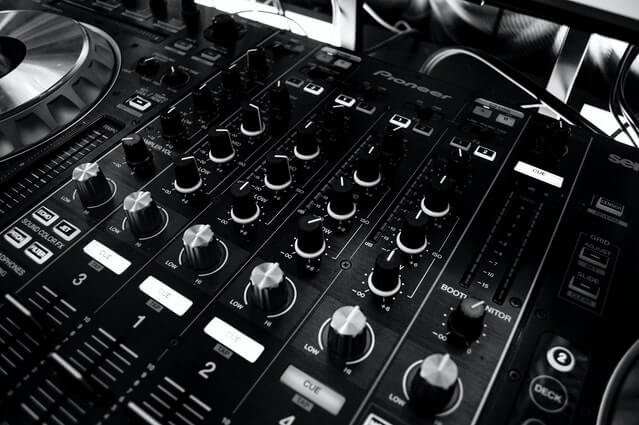In this article, I’ll explain everything you should find out about pre-mastering. Let’s get began.
What’s pre-mastering?
Pre-mastering refers to any steps you are taking at the finish of your mix process to prepare your audio for mastering. A pre-master is a high-quality completed file that’s able to be delivered for mastering.
Pre-masters are sometimes submitted to labels for final approval when the artist isn’t answerable for mastering the project or working directly with a mastering engineer.
In addition to that, releasing trendy music on vinyl requires its personal strategy to the mastering process. Some producers of vinyl data require a particular vinyl pre-master to make sure the cutting lathe delivers the best outcomes.
Though some pre-mastering wants will differ by challenge, there are a number of basic ideas you should use throughout your mix to make the method smoother and extra profitable.
Right here’s the straightforward six-step guide to an ideal pre-master:
1. Reference your mix
When is a mix really completed? It’s an enormous question that’s not always straightforward to answer.
Modern DAW workflows make it attainable to proceed to refine your project forever—that’s why it’s so vital to have perspective.
Fortunately, mixed referencing is one of the greatest methods to get it. It means comparing your combine critically towards different audio materials.
You should utilize your favorite songs, other mixes you’ve done, or previous versions of the track you’re engaged on.
Making notice of the variations and adjusting every time will show you how to make sure that you’re moving ahead, not sideways or backward!
When you realize you’ve reached your aim with your mix you may proceed to the following steps with confidence.
2. Leave headroom
The mastering process wants some room left in your audio file to work correctly.
Meaning a great pre-master all the time has enough headroom.
Headroom might be extra complicated than it appears, so head over to our in-depth guide to brush up.
However, in case you just want a refresher, the fundamentals are easy enough.
The trick to good headroom is to realize staging. It means keeping track of your ranges throughout your manufacturing process so that the signals don’t pile up on the master bus and cause clipping.
To do it you need to aim to depart loads of room as you record and mix your tracks. I recommend you aim for the peaks of waveforms hitting around -9 dBFS with the physique of the sound hovering around -18 dBFS.
Maintain that in mind as you go and you won’t be far off when it comes time to export your track.
3. Address your master bus
The consequences and processing you utilize in your master bus matter a lot for pre-mastering.
Since something you utilize on the master bus impacts the entire mix, it’s simple to make sweeping modifications to the sound.
Actually, that is one reason master bus processing might be controversial amongst mixed engineers. Some swear by it, whereas others insist it solely causes harm.
It’s completely up to you whether or not to use it in your workflow, however here’s my greatest recommendation: keep away from any master bus processing that has an enormous impact on the headroom and dynamic vary of the bounced file.
Feel free to get creative with EQ, saturation, or different processes that have an effect on the tonal balance and character of the mix. Even gentle compression that enhances the texture or punch of the track is okay.
Just go away from the primary dynamic range reduction to the mastering process!
4. Check your edits
Speaking of dynamic vary, one of the largest effects of the mastering process is to make your song loud enough to stack up against pro tracks on streaming services.
Once you begin to raise the degrees that much, all of the small particulars come out of the woodwork.
I’m talking about distracting artifacts like clicks, pops, poor edits, and even vocal mouth noise.
In case you don’t catch these within the pre-master they might cause problems in your completed product.
Ensure you take the time to put your audio editing underneath the microscope and ensure your work is clean.
5. Bounce a high-quality file
Audio file quality makes a distinction in pre-mastering.
In fact, the sample rate and bit depth you select decide whether your track can be utilized for high-resolution lossless streaming.
However in general, high-resolution files assist improve sound quality throughout your project, so ensure to use them from the beginning!
Normally, you’ll see these choices once you open a new DAW session and export your completed track.
My advice here is fairly simple—select a high-quality file kind and solely export your mix in the identical format.
What kind exactly? The higher the better, within reason. For many producers. 24 bit, 48 kHz audio is an effective balance between audio quality and file dimension.
However, for those who discover a higher sample rate sounds better to you, go for it!
6. Take a deep breath
In case you’ve made it this far—congratulations. It takes an enormous effort to take a track from thought to completed product.
Once you’re able to submit your track to mastering you need to feel happy with your work.
However, mastering isn’t exactly the end of the line.
Relying on the outcomes you get back, you might have to make mastering revisions to get to your best vision.
You might even have to offer a reference master as a guide for the mastering process.
And then once mastering is complete, there are other important steps within the lifecycle of a song.
I’m talking about getting your music on streaming platforms and promoting it to reach an audience.
With all of the hard work, you’ve put in to get to the mastering stage, nurturing your tracks once they’re up and out needs to be your next priority!

